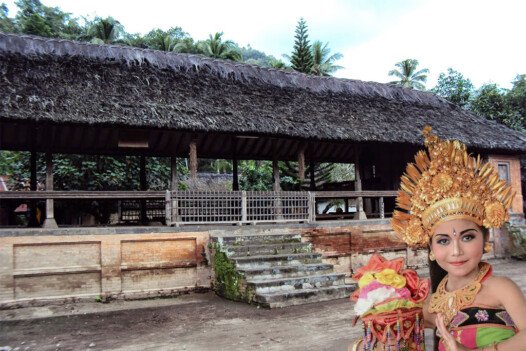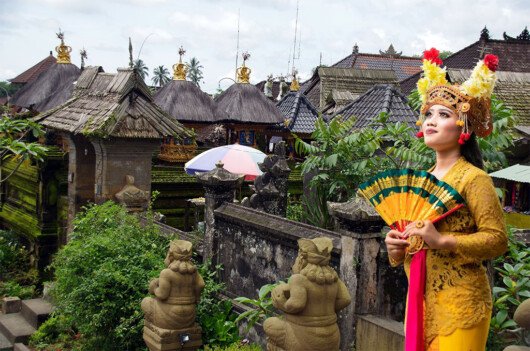Bali is a treasure trove of spirituality, culture, and natural beauty. Among its many wonders, three temples stand tall — both physically and symbolically — as pillars of Balinese Hinduism and culture: Uluwatu, Tanah Lot, and Besakih. These temples don’t just represent religious sites but are gateways to understanding Bali’s soul.
Embarking on a pilgrimage across these three iconic temples is more than just sightseeing. It’s an immersion into Bali’s ancient traditions, stunning landscapes, and heartfelt devotion that has lasted centuries. In this epic journey, we will unveil the history, significance, and experience of visiting Uluwatu, Tanah Lot, and Besakih temples — the ultimate trio for any traveler or spiritual seeker.
🗺️ The Sacred Trio: A Brief Introduction
Before diving deeper, let’s set the stage for this pilgrimage. Each temple holds its unique charm and place in Balinese Hindu cosmology:
- Uluwatu Temple (Pura Luhur Uluwatu): Perched on a dramatic cliff edge over the Indian Ocean in Bali’s southern peninsula.
- Tanah Lot Temple: Famous for its breathtaking offshore setting and stunning sunset views.
- Besakih Temple (Pura Besakih): Known as the “Mother Temple,” it’s the largest and holiest temple complex on the island, located on the slopes of Mount Agung.
Together, these temples reflect Bali’s deep spiritual connection to nature, the sea, and the mountains.
🏞️ Uluwatu Temple: The Cliff-Top Guardian of the Sea
History and Spiritual Significance
Uluwatu Temple, or Pura Luhur Uluwatu, is one of Bali’s six key temples meant to protect the island from evil spirits coming from the sea. Built in the 11th century by a Javanese sage named Empu Kuturan, it is dedicated to Sang Hyang Widhi Wasa in his manifestation as Rudra, the god of storms and the sea.
The temple’s position — dramatically perched 70 meters above the Indian Ocean on a limestone cliff — symbolizes the meeting point of earth, sea, and sky. The powerful ocean waves crashing below evoke the force of nature revered in Balinese belief.
The Experience of Uluwatu
Visiting Uluwatu is an unforgettable sensory experience. You enter through gates adorned with intricate Balinese carvings, surrounded by wild monkeys famously known as the temple’s guardians. Be cautious — these monkeys are cheeky and love to snatch belongings!
The temple’s terraces offer panoramic views of the endless ocean, especially stunning at sunset when the sky turns shades of orange and pink. The iconic Kecak Fire Dance, performed at dusk on a cliffside stage, is a mesmerizing display of Balinese culture, telling the epic tale of Ramayana through chanting and fire.
Tips for Visitors
- Arrive in the late afternoon to catch the Kecak dance and sunset.
- Dress modestly and wear a sarong (available for rent at the entrance).
- Guard your belongings from monkeys.
- Respect the sacred atmosphere — no swimming or loud noise near the temple.
🌊 Tanah Lot: The Majestic Sea Temple
Origins and Mythology
Tanah Lot, literally “Land in the Sea,” is perhaps Bali’s most iconic temple, standing on a rocky outcrop surrounded by waves during high tide. It was founded by the 16th-century priest Nirartha, who meditated on the rock and blessed it as a spiritual site.
This temple is dedicated to Baruna, the sea god, and serves as a spiritual guard against evil from the ocean. Its mystical aura has inspired countless artists and photographers worldwide.
Visiting Tanah Lot
Visitors approach Tanah Lot via a path exposed during low tide. The temple’s silhouette against the sunset is one of Bali’s most photographed scenes, evoking a sense of awe and tranquility.
Beyond the temple itself, the surrounding area is filled with vibrant markets selling local crafts and foods. The rhythmic crashing of the waves, combined with the temple’s dramatic presence, creates a surreal atmosphere.
Cultural Events
Tanah Lot is a focal point during the Odalan festival, held every 210 days according to the Balinese Pawukon calendar, where ceremonies involve offerings, dances, and prayers to honor the sea spirits.
Tips for Visitors
- Visit during low tide for the best access and photos.
- Avoid the peak tourist times to enjoy a more peaceful experience.
- Try local Balinese dishes from the nearby food stalls.
- Bring a camera to capture the sunset magic.
⛰️ Besakih Temple: The Mother Temple of Bali
Historical and Religious Importance
Besakih Temple, or Pura Besakih, holds the highest spiritual status among Bali’s temples. Situated on the fertile slopes of Mount Agung, Bali’s highest volcano, it comprises over 80 individual temples in one complex.
Known as the “Mother Temple,” Besakih has been a center of worship for over a thousand years. Its sacred location at the foot of Mount Agung, believed to be the abode of gods, symbolizes a link between heaven and earth.
The Temple Complex
Visitors to Besakih will discover a labyrinth of shrines, pavilions, and courtyards. The main temple, Pura Penataran Agung, is the heart of the complex, housing a sacred black stone believed to hold divine energy.
The architecture showcases traditional Balinese stone carvings, thatched roofs, and serene gardens, making it not only a spiritual site but also an artistic masterpiece.
Spiritual Experience
Pilgrims come to Besakih to seek blessings, especially during the temple’s major festivals like Piodalan, when elaborate offerings and rituals fill the air with incense and sacred chants.
The temple’s peaceful ambiance, coupled with breathtaking views of terraced rice fields and Mount Agung’s imposing peak, offers visitors a profound connection with Bali’s spiritual landscape.
Tips for Visitors
- Hire a local guide to understand the temple’s history and religious customs.
- Respect the temple’s sanctity by following dress codes and behavior.
- Visit early in the morning to avoid crowds and enjoy the tranquility.
- Be mindful of ongoing ceremonies and avoid disrupting worshippers.
🌟 Why Undertake This Epic Pilgrimage?
Traveling between Uluwatu, Tanah Lot, and Besakih is more than just visiting three temples — it’s a journey through Bali’s spiritual heart and cultural heritage.
- Cultural Insight: Witness traditional rituals and dance performances unique to Balinese Hinduism.
- Natural Beauty: Experience breathtaking cliff views, ocean vistas, and mountainous landscapes.
- Spiritual Connection: Engage with places of deep religious significance that have been active worship sites for centuries.
- Personal Reflection: The serene environments offer a perfect backdrop for meditation and inner peace.
🚗 Planning Your Pilgrimage
To cover all three temples, consider the following tips:
- Start with Uluwatu in the south in the afternoon, enjoy the sunset and Kecak dance.
- Next day, visit Tanah Lot in the late morning or early afternoon for a leisurely walk and sunset photography.
- End your journey at Besakih, spending the day exploring the expansive complex and surrounding nature.
Hiring a driver or joining a guided tour ensures a comfortable and insightful experience, especially since Besakih is farther from the south Bali area.
🧘♂️ Beyond Sightseeing: Embracing Bali’s Spiritual Energy
For many visitors, this pilgrimage becomes a transformative experience. Bali’s unique blend of Hinduism and animism emphasizes harmony between humans, nature, and the divine. Each temple visit encourages mindfulness, respect, and connection.
You may find yourself drawn to meditate in temple courtyards, partake in offering ceremonies, or simply absorb the serene atmosphere. This pilgrimage is not just a physical journey but a spiritual awakening.
🌿 Sustainable and Respectful Tourism
When visiting these sacred sites, remember that they remain active places of worship for the Balinese people. Show respect by:
- Dressing appropriately (covering shoulders and knees).
- Speaking softly and behaving respectfully.
- Not touching or climbing temple structures.
- Avoiding littering and supporting local businesses.
By doing so, you help preserve the sanctity and cultural richness of these incredible temples for generations to come.
🎉 Festivals and Special Occasions
If your visit aligns with Balinese festivals, you’ll witness temples come alive with vibrant ceremonies, colorful offerings, traditional music, and dances. Key festivals include:
- Galungan and Kuningan: Celebrating the victory of good over evil.
- Odalan: Temple anniversary festivals with elaborate rituals.
- Nyepi: The Balinese Day of Silence, reflecting deep spiritual renewal.
📸 Iconic Photo Moments
- Uluwatu’s cliffside temple silhouette against a fiery sunset.
- Tanah Lot temple surrounded by crashing waves at high tide.
- The vast, tiered shrines of Besakih framed by Mount Agung’s looming presence.
These images capture not only Bali’s beauty but the spiritual essence radiating from these sacred places.
Conclusion: A Journey of Heart, Spirit, and Wonder
The epic pilgrimage to Uluwatu, Tanah Lot, and Besakih temples is an unforgettable encounter with Bali’s mystical allure. It reveals the island’s profound devotion to nature, gods, and cultural heritage. Whether you seek spiritual growth, cultural enrichment, or breathtaking vistas, this journey will leave a lasting imprint on your heart.
So pack your sarong, bring an open mind, and embark on this sacred adventure — where every step leads closer to Bali’s divine essence.









